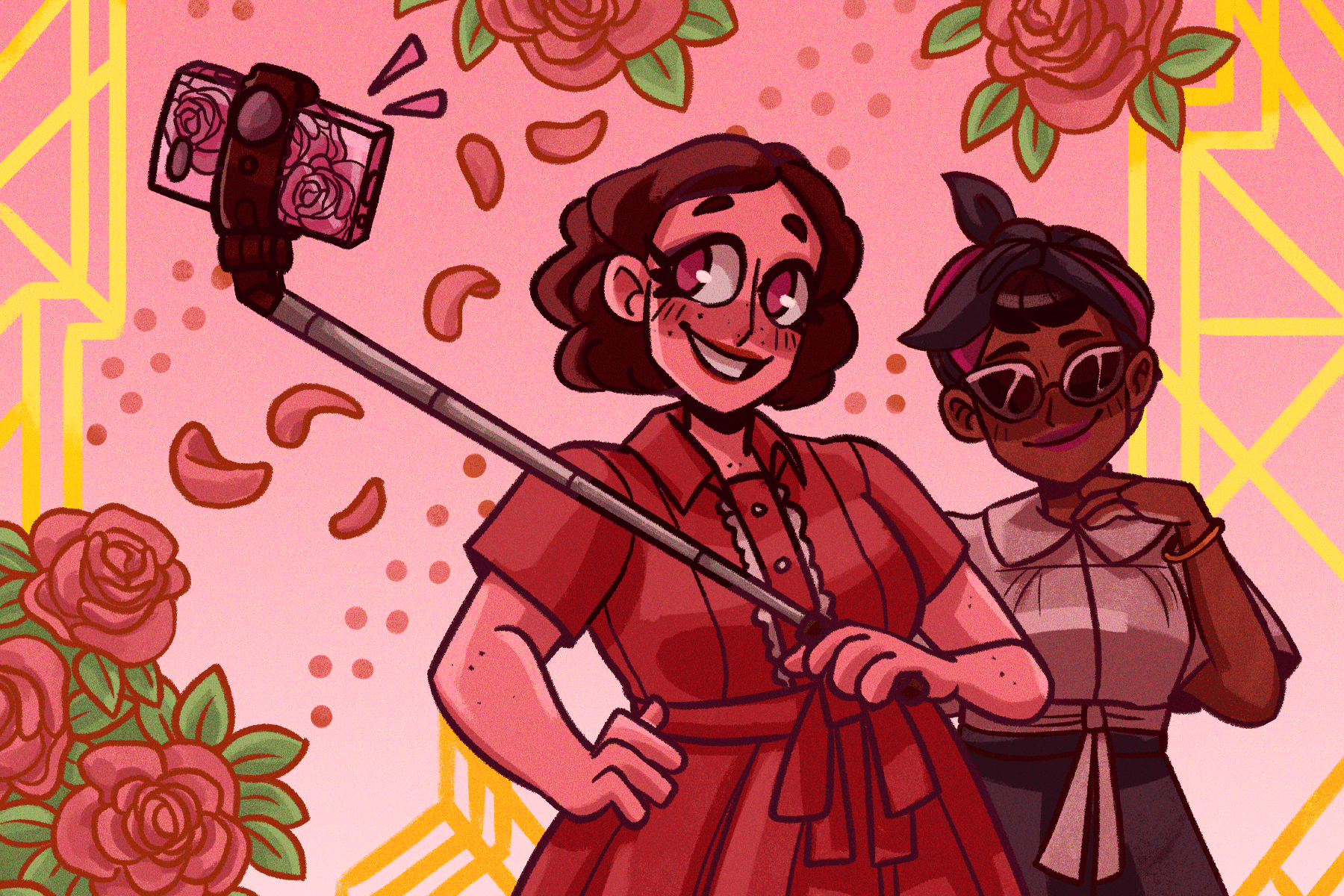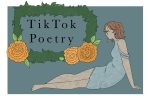Adorned in Oxfords and a sharp tweed suit, Dandy Wellington poses for the camera, transporting his fans from the 21st century into the opulent fabulousness of bygone days. His style is polished and reminiscent of retro jazz performers, with bow ties and boater hats abound. Wellington seems like the type of person one would drink scotch with in a film noir. Beyond his excellent style, Wellington was one of the first to popularize the phrase “Vintage Style, Not Vintage Values,” bringing advocacy to the table alongside his debonair outfits. In Burlesque Galaxy, Wellington writes that though the phrase “will have slightly different meanings to different people, to me it means this: though my style and my clothes may be old-timey, my values and perspective on social issues are not.”
One can find the mantra in different contexts: on pins, Instagram infographics and posters at feminist protests. But, beyond its snappiness, the motto features notions of inclusivity and accessibility that were not necessarily present during the peak popularity of vintage styles. Historically, society used these styles to uphold certain ideals. However, the vintage community reclaims the garments to create a more progressive future. For instance, ditsy femininity was expected when poodle skirts had their campy 1950s heyday. During this time, submissiveness was taught to women, as was the principle that appearances equated to inner worth. Since society once used these clothes to support restrictive ideals, such as performed femininity or subservience, some believe the garments are instantly compliant with such beliefs.
Hence, one may wonder: Why would modern women wear clothing from the oppressive period people have fought so fiercely to escape? When people equate one’s choice of garments to the morality of past decades, they feed into the conformity that trailblazers have fought against. Perhaps the answer is that, through the hard work of our foremothers, women now have the choice to dress as they please, from pinup hairdos to below-the-knee skirts. Wearing corsets or modest blouses was once expected but is now simply an option among many others. There is an interesting liberation in wearing clothes that were once forced upon people simply for aesthetics. One can find defiance against antiquated oppressors by reclaiming a fashion style and making a progressive statement while wearing it.
While some may argue that one who dresses in a vintage style views a problematic past through rose-colored glasses, equating one’s morals to their appearance is contradictory. Beloved vintage-style YouTuber Rachel Maksy took to the internet to debunk some misconceptions, featuring a lineup of vintage enthusiasts on her channel. After discussing her own experiences with the romanticization of vintage eras, Maksy features Nadia, or @feminist_fatale on Instagram, to discuss the personal appeal of vintage fashion. Nadia remarks, “It’s a fair misconception that I would be one of those people who wish I lived in the ’50s because I could go get milkshakes and go to a drive-in and I could wear cute dresses. But, I’m like, ‘I could do all those things now and have fundamental human rights!’”
Wellington is also featured in Maksy’s video, and he discusses the reservations that people of color may have about joining the vintage community. He argues that his vintage style honors the innovative power of those who, amid hardship, made incredible artistic and societal contributions. As a Harlem native, Wellington has a particular interest in the Harlem Renaissance, which was the 1920s visionary revival of Black music, art and fashion. “A big part of my existence in this vintage community is to continue to speak truth to that history — honor it,” Wellington earnestly tells the camera.
Representation is another crucial point of the phrase. Many adored fashion eras, from flashy Victorian to the war-time silhouettes of the 1940s, were periods riddled with a disdain for those who did not fit into a mold. One can see a recurring pattern when looking at advertisements from years past: Models were primarily slender and white. Despite what brands may have historically communicated to the public, the models were not the only ones wearing the apparel. By dressing vintage in the modern day, people of all sorts can reclaim a narrative that once excluded them and represent ideals that were not mainstream during their chosen fashion era.
Plus size clothing, for instance, was not depicted in mainstream advertising during the popular vintage fashion decades, primarily in the 20th century. Historically, designers disregarded the options for plus-size garments, thereby suggesting that there is an “ideal” body type. For instance, according to Alexandra Mondalek, the midcentury obsession with thinness left plus-size consumers overlooked as the ready-to-wear industry grew. Subsequently, options were scant, and people were often left to make their clothes. In addition, from a historic preservation standpoint, non-plus-size clothing has been frequently prioritized when creating a curatorial record, curator Emma McClendon told Mondalek. As a result, the “Vintage Style, Not Vintage Values” community has welcomed plus-sized fashion enthusiasts with open arms, leading to more equitable representation and debunking the idea of a “fashionable” body type.
Not only are vintage-clothing enthusiasts reclaiming older fashions, but they are also helping to preserve historical artifacts. From rummaging through estate sales to finding long-forgotten attire in landfills, hard work goes into wearing vintage. More tedious activities are needed to restore a garment’s former glory, such as getting rid of mischievous moths or degreasing decades of built-up grime.
Vintage clothing was also “made better” than the clothes of today, with higher quality fabrics meant to last. The work of Brit Eaton, also known as the “fashion archeologist,” is proof of the durability of vintage garments. Eaton forages through old, often abandoned buildings for clothing, particularly denim. In everywhere from long-forgotten mine shafts to decrepit buildings, Eaton comes across decades-old pairs of jeans that are still in fantastic condition. He discovered one rare find that was amazingly still wearable — a pair of 1880s Levi’s jeans. While “Vintage Style, Not Vintage Values” implies an overall progressiveness, maybe it is also time to regress back to a mindset where clothes were made to last and cherished by their owners.
“Vintage Style, Not Vintage Values” is an empowering mantra that celebrates the liberties that come with the freedom of fashion expression. But, in the age of ripped jeans and fast fashion, it can feel daunting for some to dress vintage. As vintage enthusiasts take the streets in decades-old garb, perhaps the advice of famous jeweler Harry Winston should come into play: “People will stare. Make it worth their while.”

















